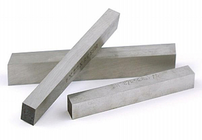I was turning last night, and something odd happened with one of my scrapers. This scraper is M2 HSS, and has been in use for quite some time with no problems raising a ground bur. This particular scraper failed to raise a ground bur as it usually did. My grinding wheel is Norton 8" SG 80gt. When I raise a ground bur, I usually run my finger to test it, and there was none detectable this time. This scraper performed poorly with this non existent bur. I tried raising a manually raised bur on this scraper, and no problems there....the manually raised bur appears and functions as normal......but, there is no detectable bur coming off the grinding wheel.
I tested using a few other scrapers, and the ground bur is the same as usual.....easily detectable with the finger on these other scrapers.
I used a diamond dresser and tested again......no change.
The platform angle was unchanged.
Anyone have any idea what the problem with this one scraper might be?
Anyone ever experience this?
Have I reached a spot where the M2 specs might be different? (Several inches of this scraper have been used up, and it previously produced a ground bur successfully.....but, not this time.)
-----odie-----
I tested using a few other scrapers, and the ground bur is the same as usual.....easily detectable with the finger on these other scrapers.
I used a diamond dresser and tested again......no change.
The platform angle was unchanged.
Anyone have any idea what the problem with this one scraper might be?
Anyone ever experience this?
Have I reached a spot where the M2 specs might be different? (Several inches of this scraper have been used up, and it previously produced a ground bur successfully.....but, not this time.)
-----odie-----


